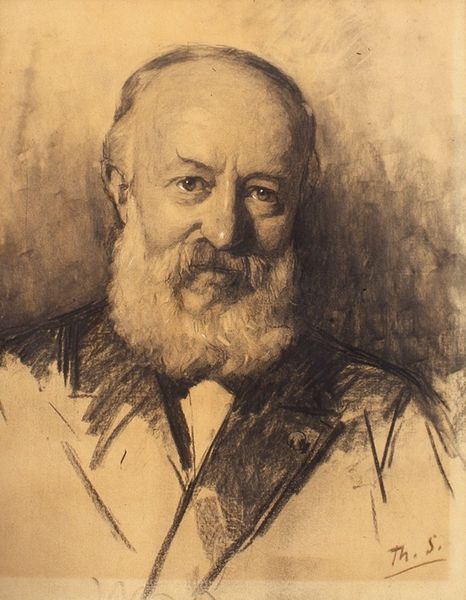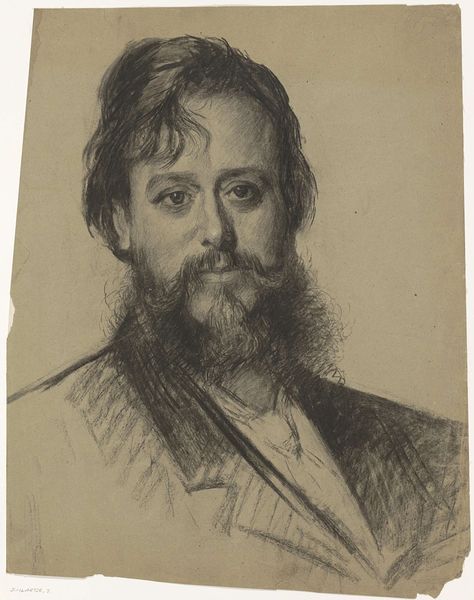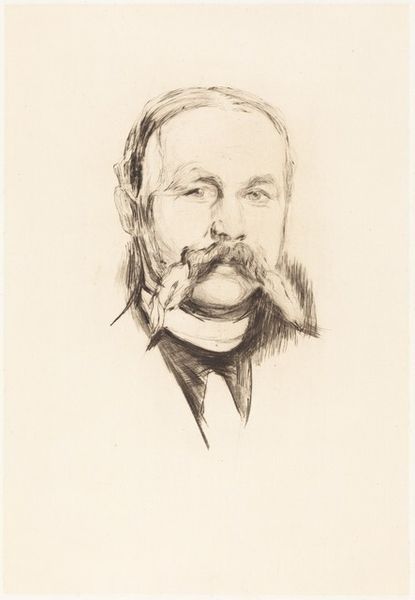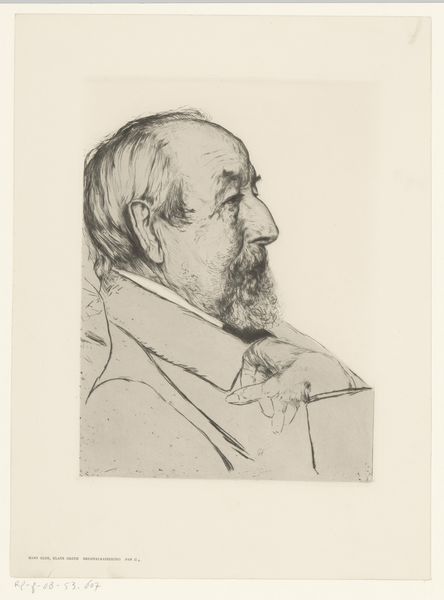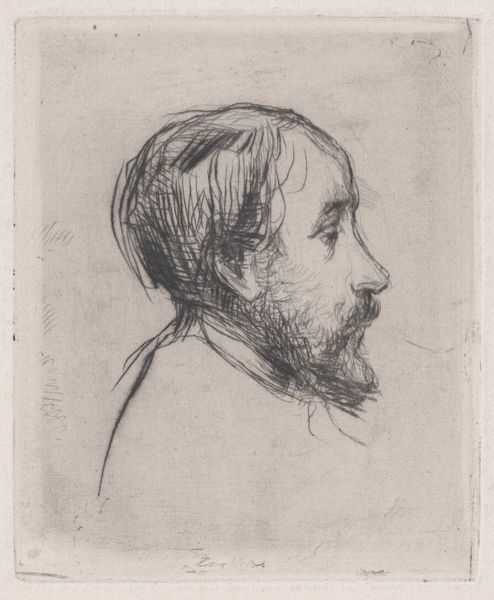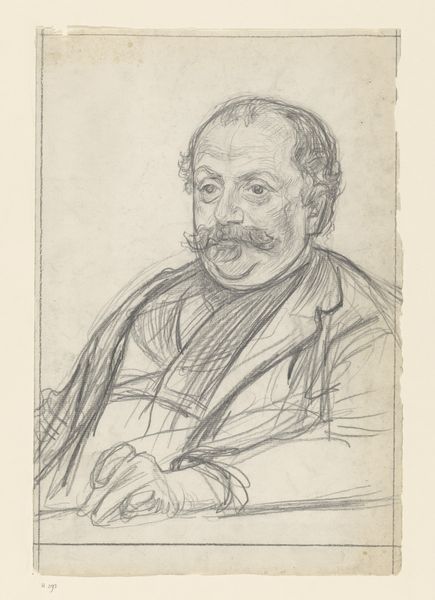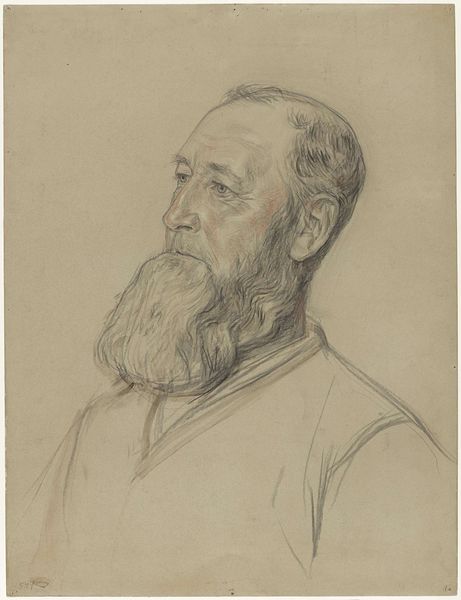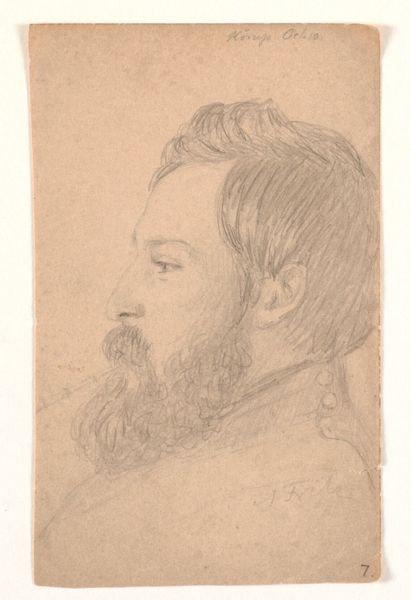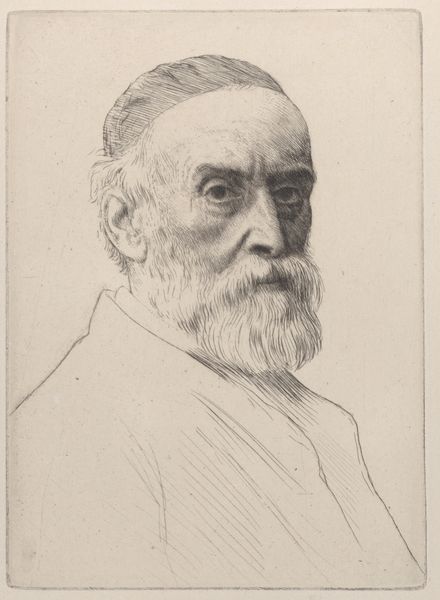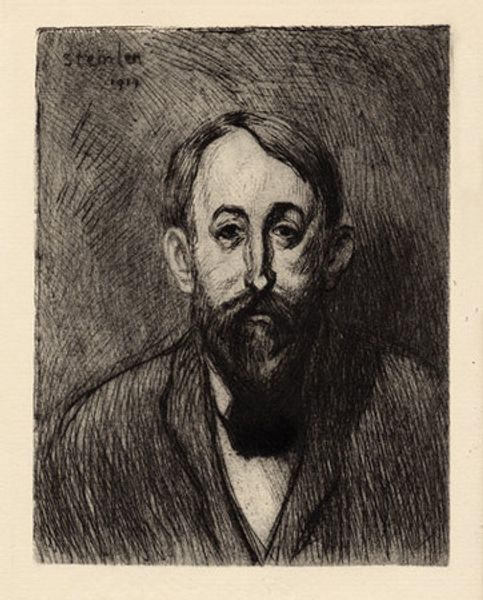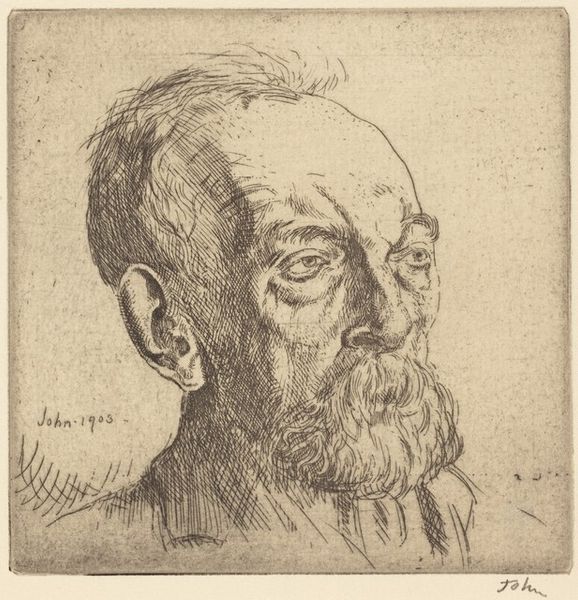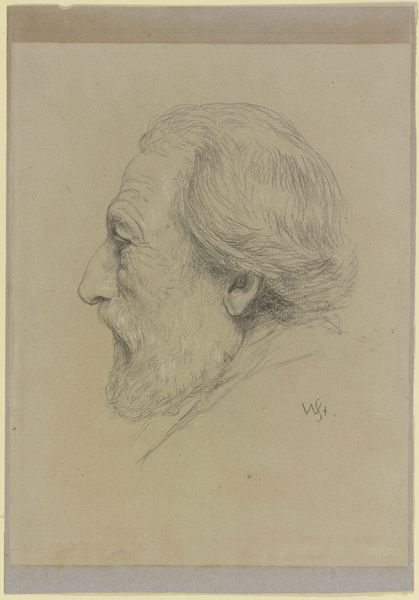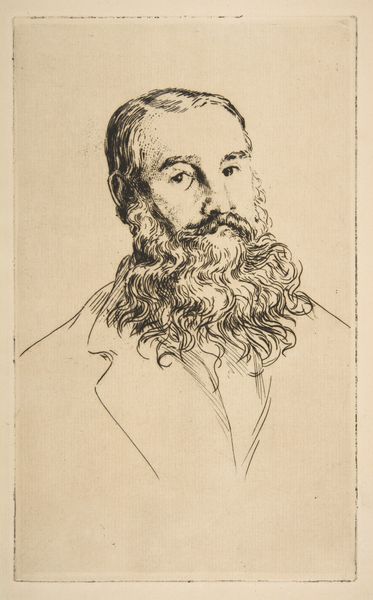
drawing, pencil, charcoal
#
portrait
#
drawing
#
charcoal drawing
#
pencil drawing
#
pencil
#
portrait drawing
#
charcoal
#
realism
Copyright: Public Domain: Artvee
Curator: This is James Ensor's "The Playwright Emile Augier," a striking portrait executed in pencil and charcoal. What are your first thoughts? Editor: Stark. The high contrast and intense gaze give it an immediate emotional charge. It's economical in line work but emotionally abundant. Curator: Precisely. Note how Ensor uses hatching and cross-hatching to build form and texture, especially around the eyes and beard. The interplay of light and shadow creates a compelling sense of depth. The application is quick and vigorous. What does it evoke? Editor: Well, Augier was a significant figure in the realist theatre movement. A medium like charcoal emphasizes a lack of romanticism and an inclination towards raw representation. Curator: A crucial insight! Augier sought to depict life as it was, challenging the more sentimental melodramas of his time. How do you think this drawing captures that ethos? Editor: Look at the unidealized portrayal. There are wrinkles, slight asymmetries—evidence of a life lived and observed. And how the collar of his jacket is drawn as simply parallel lines, like an engineer sketching architectural plans. No embellishment; the message is delivered by direct line. It eschews glorification for sober assessment. Curator: Interesting perspective. I see that economy of line contributing to an overall feeling of honesty. Ensor could easily flatter, yet he seems more invested in capturing Augier’s intellectual presence and perhaps his world-weariness. It transcends a mere likeness. Editor: The political dimension too. I would suggest Augier, through Ensor's rendition, speaks to a changing European audience that was increasingly interested in accurate portraits of notable people. Augier was, like the charcoal with which his portrait was drawn, elemental. Curator: Well put. The work stands as a potent example of the dialogue between artist and subject and art and the era. Thanks for the consideration! Editor: The pleasure was all mine. A study in line, emotion, and history. A great moment!
Comments
No comments
Be the first to comment and join the conversation on the ultimate creative platform.
